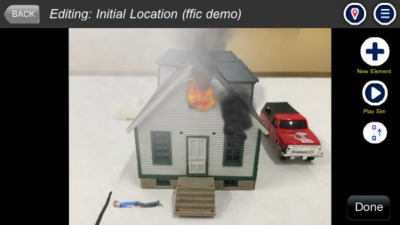
Betweeen Alarms: July 2015
Arjuna George
Features Hot Topics Inside The HallDue to the numerous positive advancements in the fire service – better detection, public education and stricter building codes – departments respond to fewer structure fires. The reduction in fires is positive for our communities but negative for firefighter development and safety. Less exposure to fires means that it is more important than ever to be creative with your training.
 Departments respond to fewer structure fires
Departments respond to fewer structure firesRetired Phoenix Fire Chief Alan Brunacini says our brains recall past situations through image slideshows. Recalling those images tells us how to act on what we see. With fewer incidents, if we don’t adjust our training and adapt our future firefighters will have no slides from which to recall.
YouTube and other online video platforms give us a huge boost in incident training. You can learn to read smoke and study the tactics online, but I believe we are missing a key learning opportunity: scenario-
based training.
With a mixture of real-life calls, live-fire training, instruction videos and tabletop scenario-based training, our current and future firefighters have a good chance of being the best we have ever seen.
Tabletops are not new – I have taken classes using tabletops for years – but with tabletops 2.0, the experience is even greater! Tabletops 2.0 is a hybrid of the classic model houses mixed with new technology to enhance the learning.
A classic tiny town is an affordable addition to your department’s training plan. I have found the best model structures are HO scaled (87 times smaller than original size) because they are the appropriate size with which to use toy vehicles. HO models can be found online or at hobby stores. Fire apparatus and other emergency vehicles are found in any toy store.
At Salt Spring Island Fire Rescue we create fake fire and smoke using painted steel wool and cotton balls. The steel wool is easily molded into realistic shapes that contour out of windows and doors. For fire hose we use four different-coloured yarn segments that represent specific hose sizes. For the roads and layouts a simple flipchart piece of paper or a Coroplast board with streets drawn on it works well. We also created PPV fans, drop tanks and ladders from miscellaneous, everyday items. Be creative. Anything that helps firefighters visualize what is happening helps improve the muscle memory and creates snap shots from which to recall lessons.
You can be up and running with your own tiny town for a very minimal cost. Over time, get more advanced in your props with hazards and hazmat pieces such as drums, propane tanks and hydro lines. We burned and crushed some of our cars to enhance what the firefighters see. My goal when doing tabletops is to have the firefighters see everything that is happening in the scenario; there is no guessing and no pretending.
Now for the 2.0 part of tiny towns. With your tiny-town props in place, use SimsUShare or other simulation software to capture your scene. SimsUShare was originally developed for creating simulations from real-life photos. We use the software to photograph our tiny-town scenario and then add the fire and smoke that you see modeled on the tabletop; it is now moving and much more visual. The digital tiny town can then be displayed on the big screen or on a tablet.
With tiny town 2.0, firefighters get the tactile benefits of a tabletop, manoeuvring vehicles and conducting a proper 360-degree size-up, but also have a chance to see active, realistic fire and smoke on all sides of the scenario.
Another way to improve the tiny-town scenario is to incorporate incoming responders. When we run the scenario, the incident commander and cold-zone members stay in the same room as the tiny town to run the scene. Incoming responders check into command and receive their simulated tasks, such as stretching a 65-milimetre (2 1/2-inch) hose to the A side first floor. To make the scene more realistic, the firefighters assigned to a task actually leave the room, don PPE and SCBA, and perform a task. It does not necessarily have to be the exact task the incident commander directed; it could be a different mini job such as set up a ladder, do a 360 of the fire hall or set up the positive pressure fan.
Having the crew perform activities during the tabletop provides us with a number of benefits. For one, the scenario is slowed down slightly to allow for more real-time decision making. The room with the scenario is also less busy and more conducive to training. All our tabletops include radio communications, which helps train incident commanders and firefighters on clear communications. And, most importantly, firefighters actively participate and have an opportunity to hone some of the smaller skills.
Be innovative, creative and try tabletops 2.0 in your training program. Train like you play, and start building your mental slideshow so when you are faced with a tough call, you can recall some nuggets that may just save your life!
Arjuna George is the deputy fire chief of operations on Salt Spring Island, B.C., and has served on the department since 1997. ageorge@saltspringfire.com @AJGeorgefire
Print this page